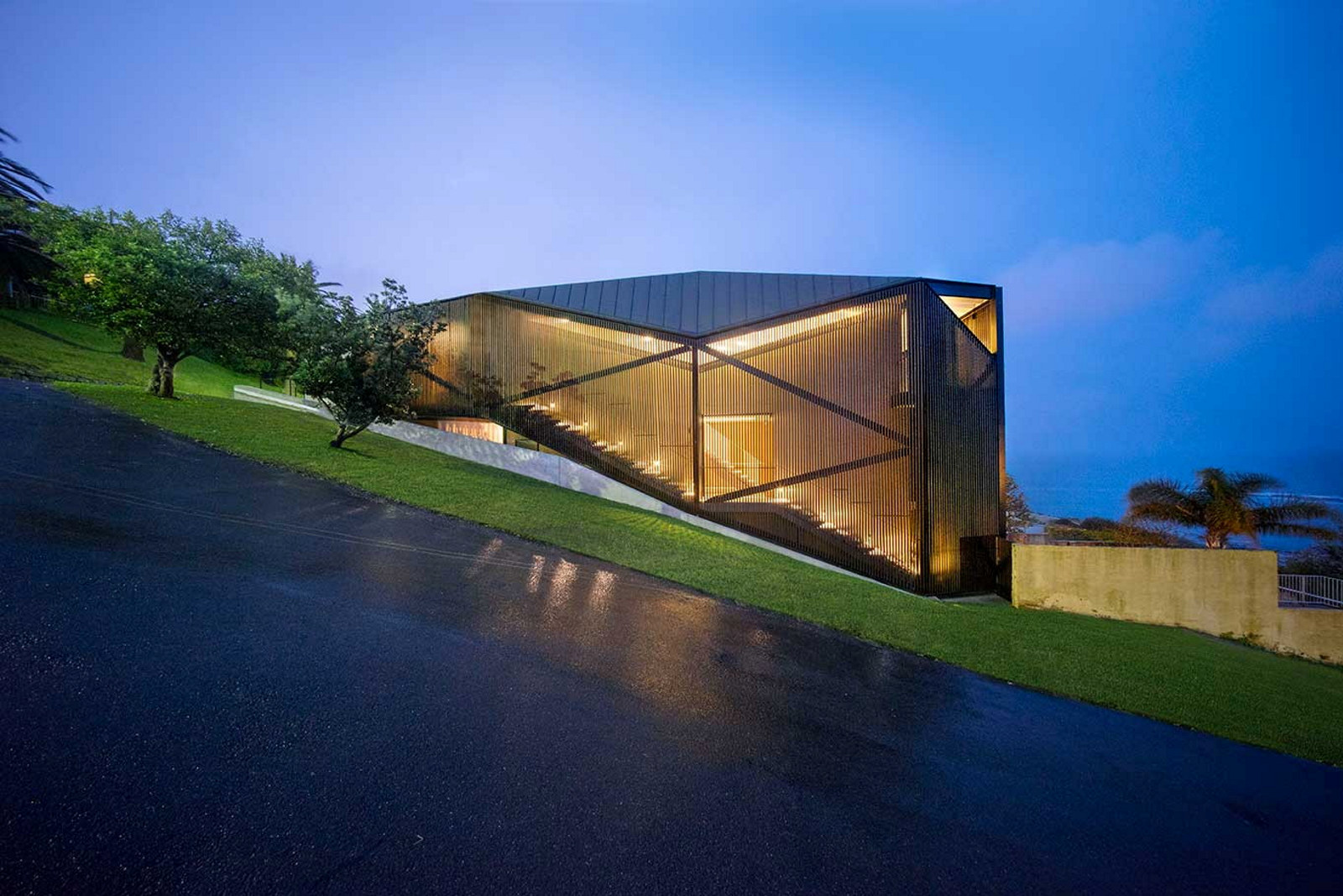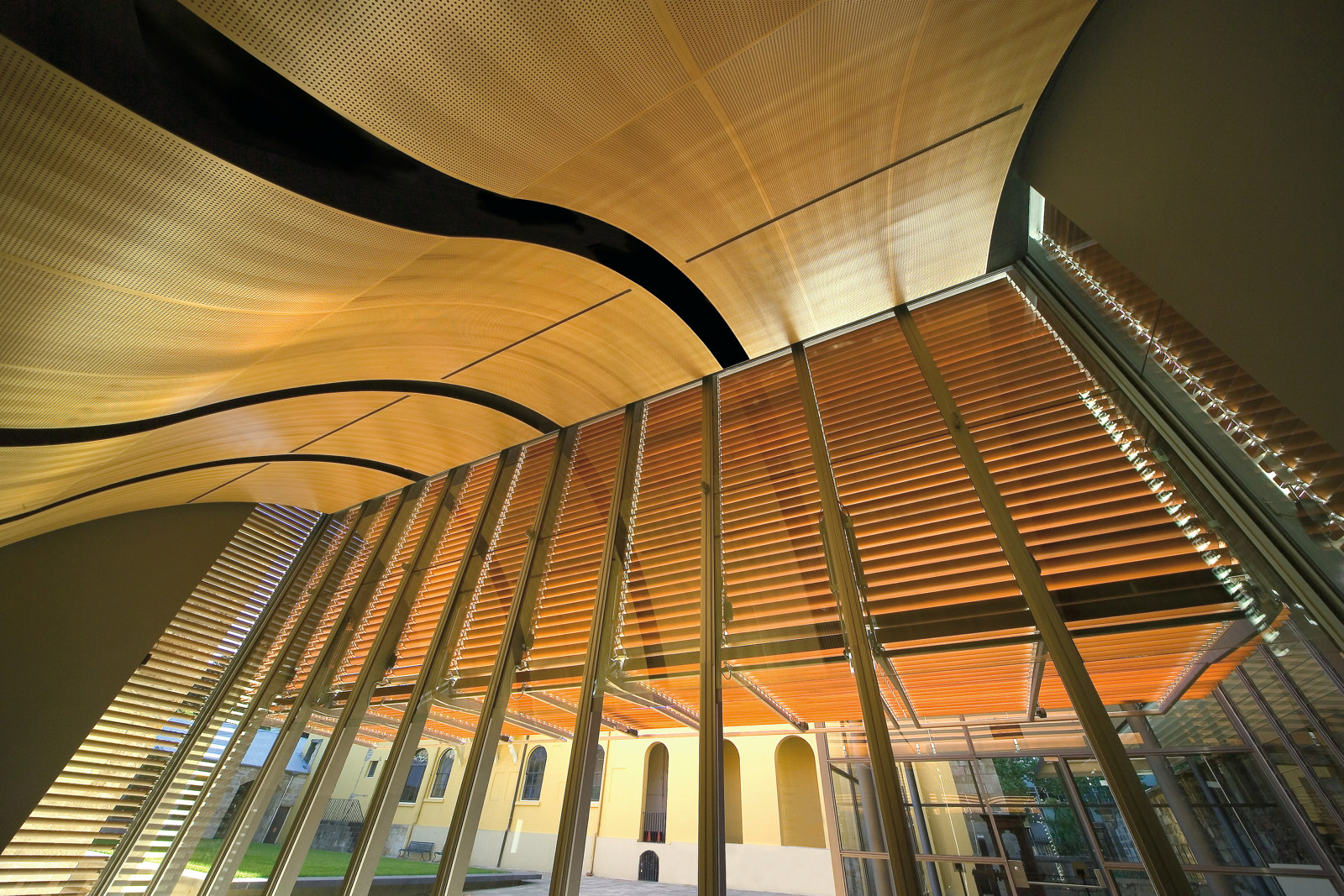About John Gollings: The History Of The Built World
This exhibition explored over half a century of work from Australia’s foremost architectural photographer comes to the Museum of Sydney
John Gollings AM is Australia’s pre-eminent photographer of the built environment. For more than 50 years, he has combined his interests in photography and architecture to capture the cultural construction of social spaces, from images of sacred rock art sites and ancient temples to commissioned shots of suburban dream homes and monuments of cultural and corporate architecture.
Gollings: The History of the Built World is the first major survey of this renowned photographer’s practice and career. Originally developed by the Monash Gallery of Art, the exhibition showcases 65 photographic works spanning Gollings’s extensive portfolio, including images that capture the ruins of abandoned cities, iconic modernist buildings, and the most recent architectural additions to our cityscapes. The retrospective provides a remarkable visual history of human habitats, both at home and abroad.
Through the lens
Gollings’s prolific recording of the architectural world through imagery is unparalleled. His photographs are widely reproduced, and continue to play an important role in shaping public perceptions of Australian architecture. Constantly innovating with photographic technologies, and investigating new subjects with a restless enthusiasm, Gollings has developed a distinctive visual style, embedding the viewer in dramatic face-to-face encounters with built environments. His photographic practice engages directly with architectural form, uniquely capturing the ‘personality’ of buildings and structures. Combining technical prowess with a range of compositional techniques and visual effects, he portrays buildings as lively habitats rather than static monuments, creating a form of architectural portraiture infused with meaning.
Gollings describes himself as solely a photographer of architecture:
My purpose is to identify the quintessential elements and intrinsic dignity of architectural works, ancient and modern, and to convey these sometimes nebulous attributes through the palpable, visual power of form. I try to encapsulate this in a single image.
A personal connection
Melbourne-born Gollings first picked up a camera at the age of nine, falling in love with the process of photography. He continued snapping, Nikon F in hand, throughout his time at the University of Melbourne, where he formally studied architecture during the 1960s. After graduating, he decided to pursue his self-taught hobby full‑time, stepping into the world of advertising and fashion photography.
Meanwhile, his former architecture classmates gradually began to design and construct significant projects. ‘I was their go-to photographer’, explains Gollings. ‘I was really starting to shoot some pretty major architectural work in the late seventies. By the mid‑eighties, I had firmly committed to just photographing buildings.’ His catalogue of work quickly grew to include commissions from some of the world’s most recognised architects, including Le Corbusier, Glenn Murcutt ao and Harry Seidler ac obe.
Alongside his well-known commercial work, Gollings engages in personal projects concerned with architectural history and heritage. This fascination is apparent in his documentation of places such as Melbourne and Surfers Paradise, where he has recorded the evolution of the built environment over extended periods of time, and case studies of ancient structures in China, Cambodia and Libya. One of his most recent projects focuses on capturing Nawarla Gabarnmang, an Indigenous rock shelter located in Arnhem Land. Dated at over 45,000 years old, the structure is the oldest human construction photographed by Gollings, and was created by tunnelling into a cliff face to form a pillared interior space.
Studying Sydney
Gollings also has a career-long connection to Sydney. The earliest photograph in the exhibition captures the Sydney Opera House under construction in 1968, concrete pillars framing a view to the harbour.
This link is explored in the exhibition through a new section exclusive to the display at the Museum of Sydney, with images showcasing award-winning adaptive re-use project The Brewery Yard in Chippendale; Barangaroo House on the Darling Harbour foreshore, one of Sydney’s newest architectural additions; Frank Gehry’s Dr Chau Chak Wing Building; and buildings cared for by Sydney Living Museums, including The Mint.
Gollings: The History of the Built World was a photographic immersion into the evolution of architecture, and a celebration of Gollings’s distinctive car4eer and unique artistic vision.
Past exhibition

Past Exhibition
Past exhibition
John Gollings: The History of the Built World
This exhibition offers a much anticipated opportunity to appreciate the full breadth of his distinctive career and unique artistic vision
About the authors
Stephen Zagala, former Senior Curator, Monash Gallery of Art, with Amelia Lindsay, former Project Officer, Curatorial & Exhibitions, Sydney Living Museums.
Related

Behind the Lens with John Gollings
We go behind the lens with architectural photographer, John Gollings. Uncover insights into his interactions with architects and how these conversations help define his approach to capturing the shot
Published on
Architecture and design
Browse all![View of the Australian Ballet 'The sleeping beauty (detail)' [right] and the Opera Australia 'Mariana Hong in Falstaff (detail) ' and the Sydney Symphony Orchestra 'People's choice concert (detail) [left] stairwell banners - The People's House marketing & installation photoshoot](https://images.slm.com.au/fotoweb/embed/2023/11/5fa6b34f18bd4d5b9b469a42a8ae591c.jpg)
Sydney Opera House: inspired design
Kieran Larkin, Senior 3D Designer at Museums of History NSW, talked to us about some of the highlights and challenges of designing the landmark exhibition The People’s House: Sydney Opera House at 50, on display at the Museum of Sydney until March 2024

The coolest room in the house
What practical techniques can we learn from historical building design to minimise heat and energy consumption in our homes today?

The Astor, 1923–2023
Upon completion in 1923, The Astor in Sydney's Macquarie Stree twas the largest reinforced concrete building in Australia, the tallest residential block, and this country’s first company title residences

Visions on the future
Meet the team at Australia’s longest-running and most influential architectural practice